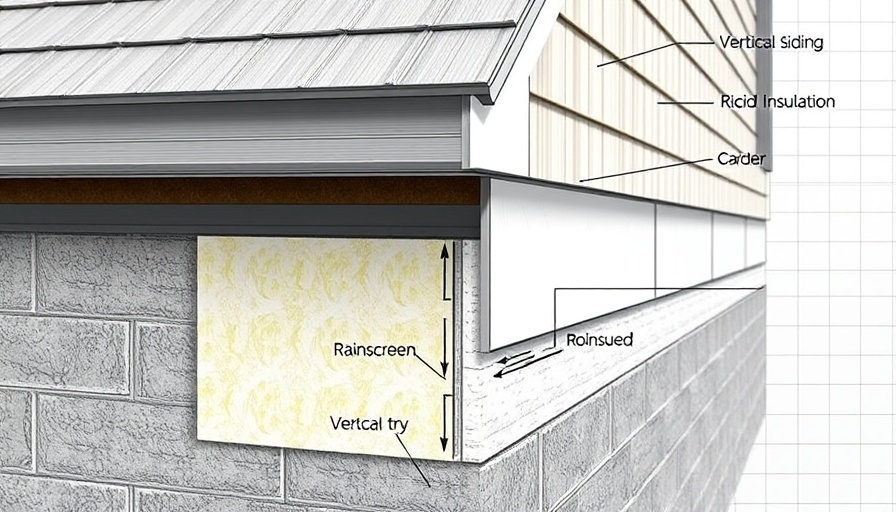
Understanding Rainscreens: The Basics
In modern construction, rainscreens have become a popular choice among builders and homeowners alike. These systems create a barrier that allows rain to drain away from a structure, effectively preventing moisture-related problems. Imagine a system that not only protects your home but also contributes to its longevity—this is the magic of rainscreens. Understanding how they work, particularly in the context of window design, is essential for anyone considering building or renovating.
Water Drainage in Rainscreens
When contemplating the drainage of a rainscreen system featuring horizontal furring strips, particularly around 'innie' windows (windows that are set back into the wall), several key elements come into play. The horizontal furring strips help create a space that encourages water to drain and escape rather than being trapped within the wall. By creating this drainage space, builders can effectively reduce the risk of mold and decay. Rainwater that trickles down the exterior face of the wall should naturally flow downwards and out through weep holes, which are small openings designed to allow water to exit the wall assembly.
Why Horizontal Furring Matters
Horizontal furring strips hold an important role in this system as they can direct water flow. The unique angle created between the furring strips and the wall allows for optimal drainage. It's like a gentle slope that guides water away from critical areas, ensuring that the integrity of your structure remains intact. Moreover, by installing the furring above and below 'innie' windows, builders can double-down on this protective measure and effectively mitigate water-related issues.
Challenges and Solutions
Despite the clear benefits of this design, some challenges may arise during installation or maintenance. Ensuring that weep holes remain unobstructed is crucial; otherwise, water can pool in undesirable areas, leading to increased moisture levels and potential damage. Regular inspections and proper maintenance are key in ensuring that the rainscreen system functions effectively throughout its life span.
Conclusion
Understanding how water drains in a rainscreen system is essential knowledge for builders, architects, and homeowners. By grasping the mechanics of drainage, particularly in conjunction with window design, one can make informed decisions about building practices that enhance durability and resilience against the elements. This awareness helps in crafting homes that are not only beautiful but also sustainable and long-lasting.
 Add Row
Add Row  Add
Add 




Write A Comment